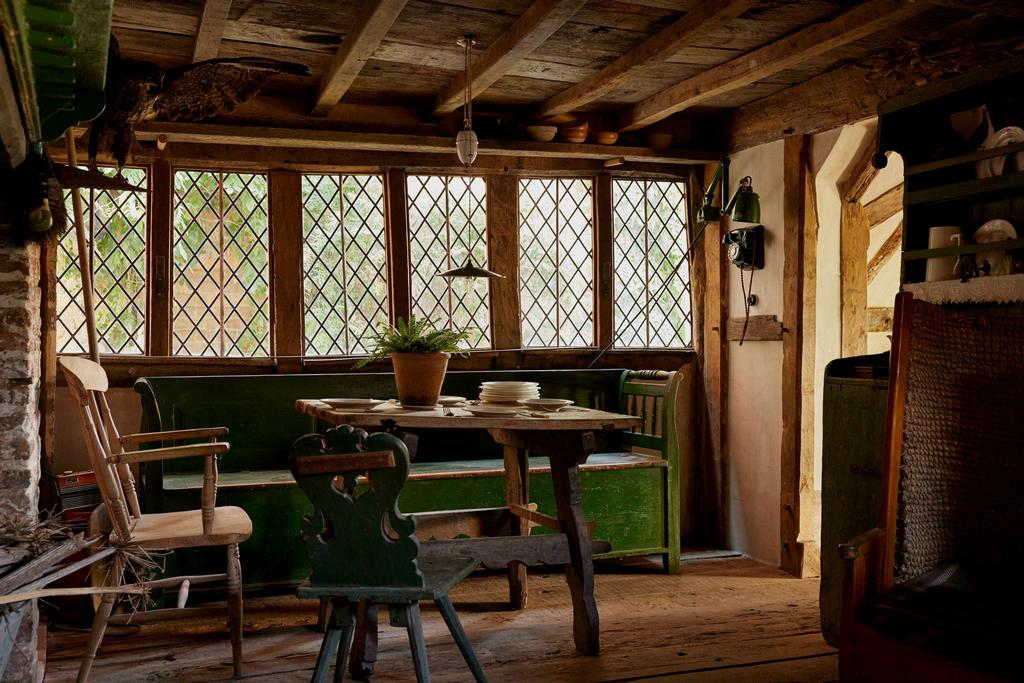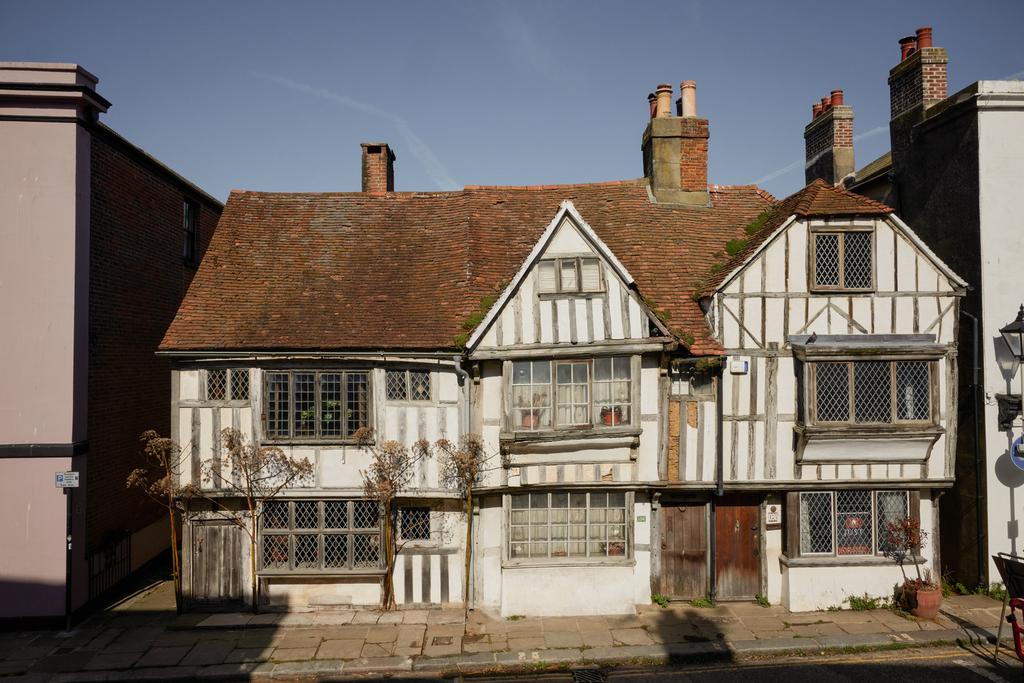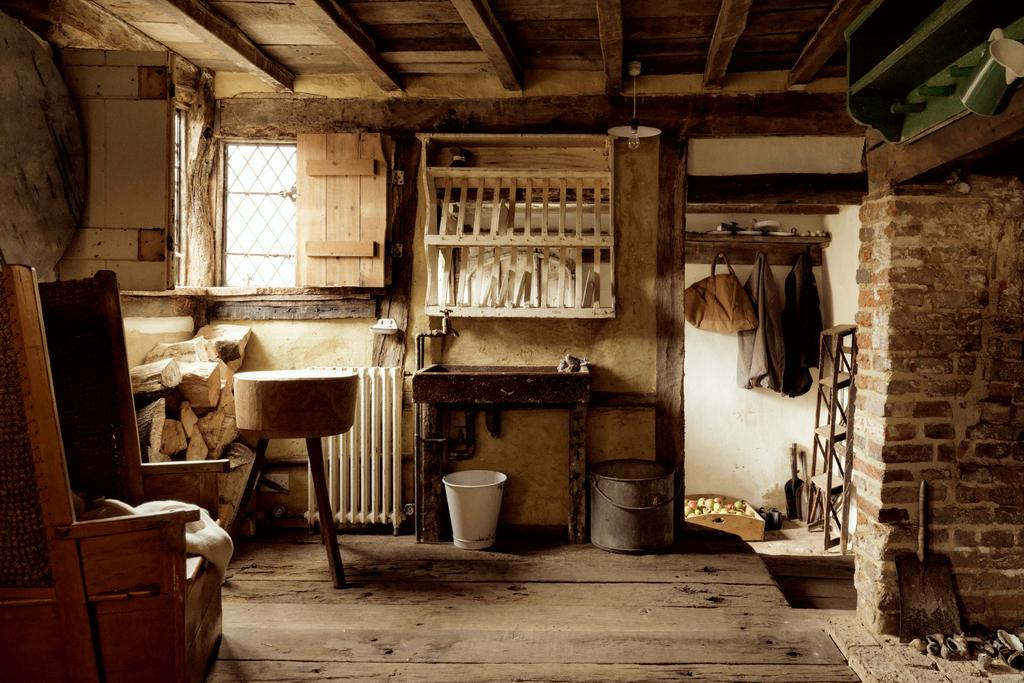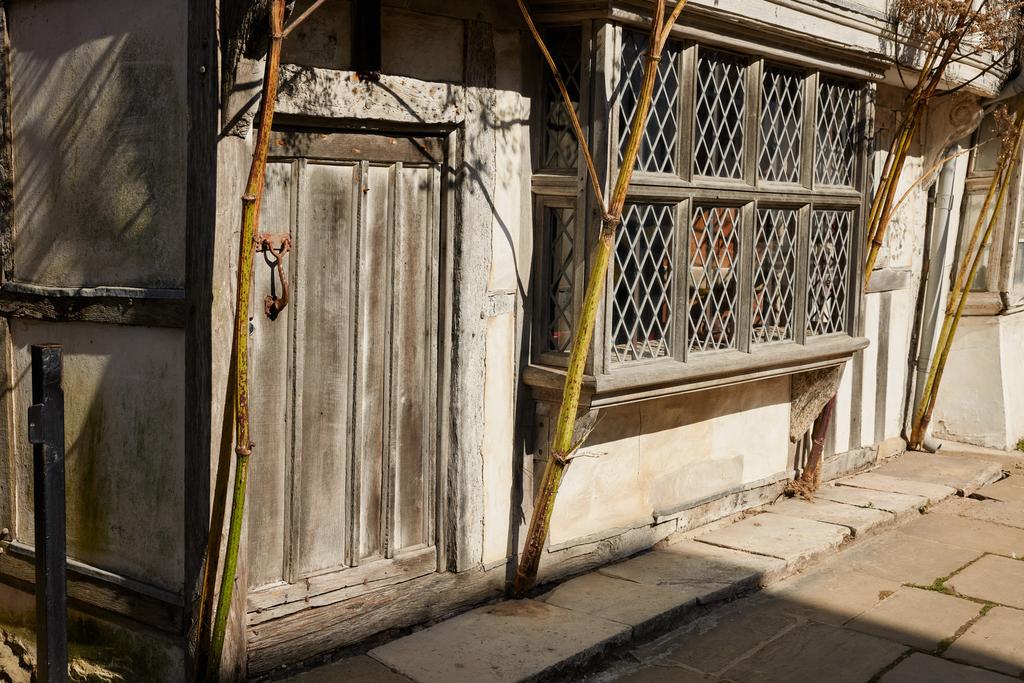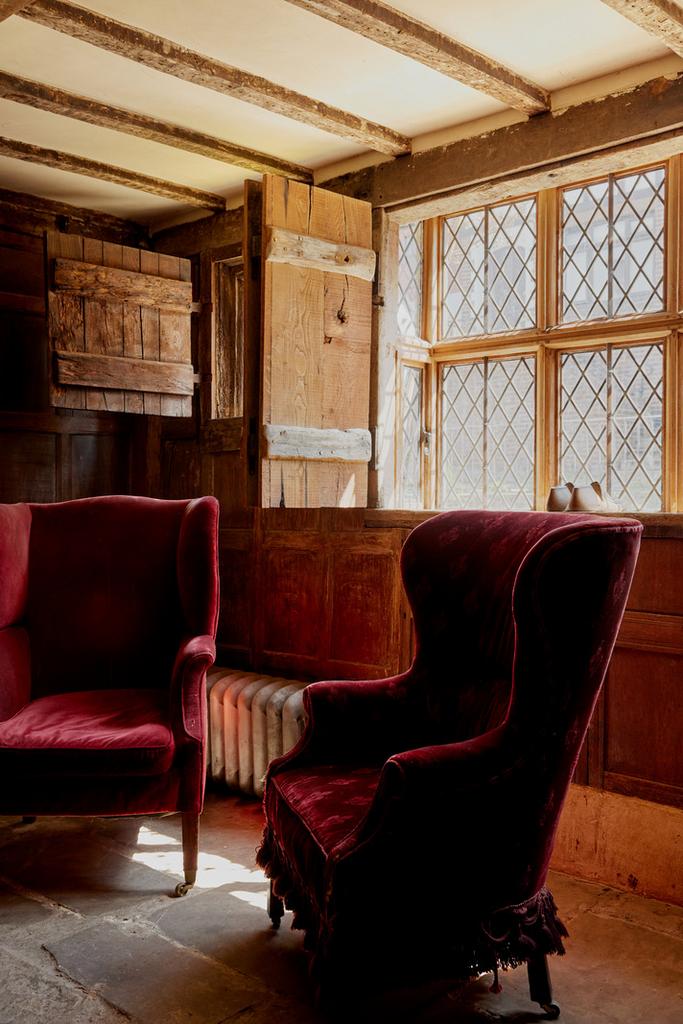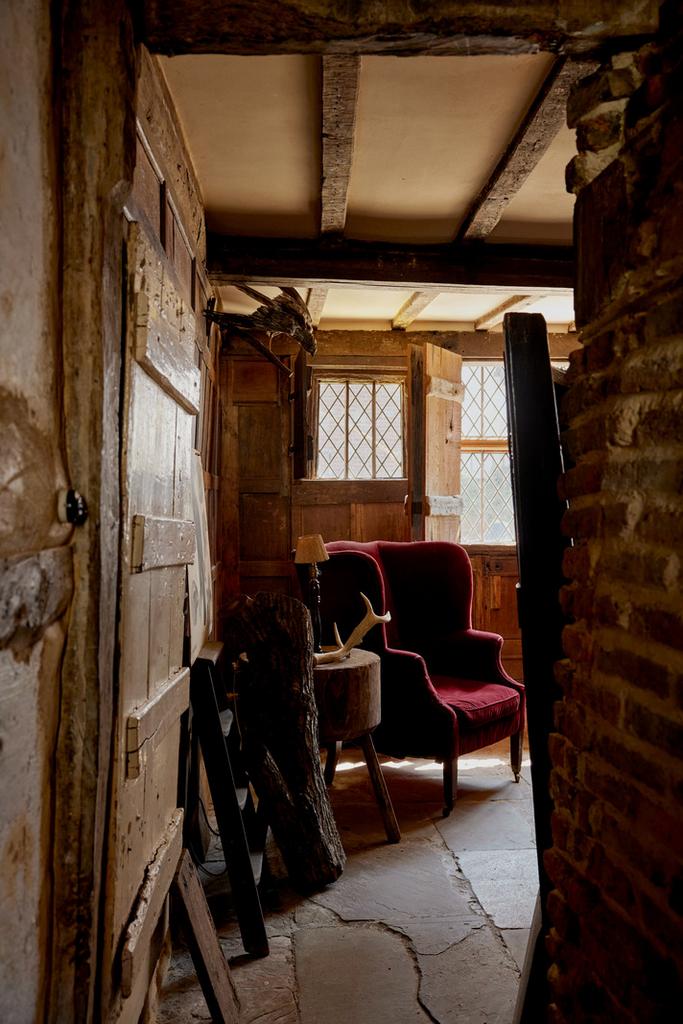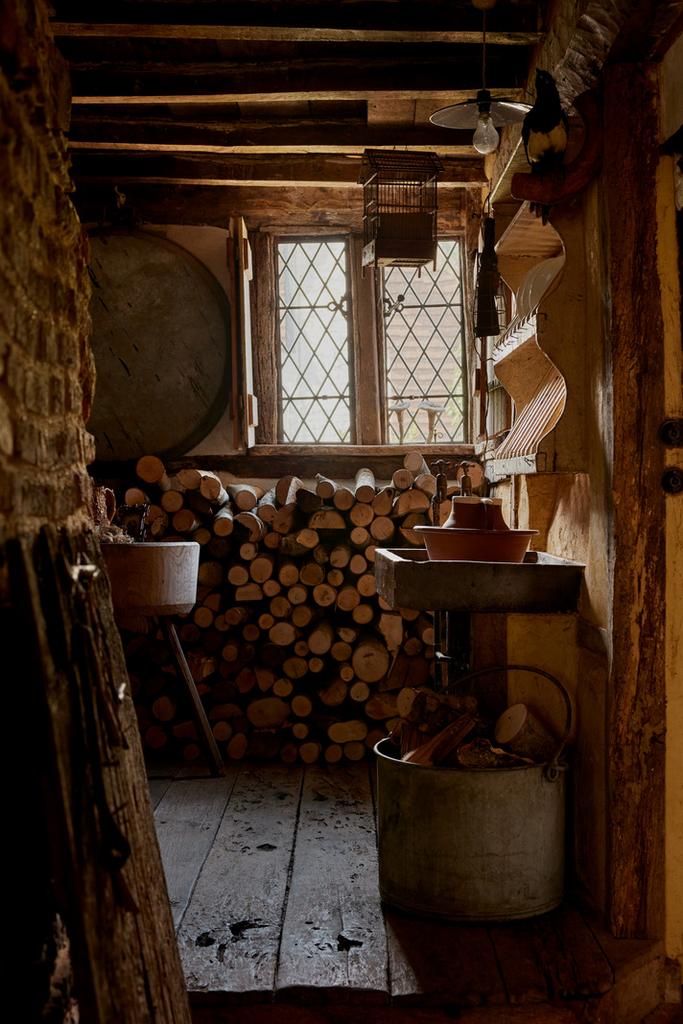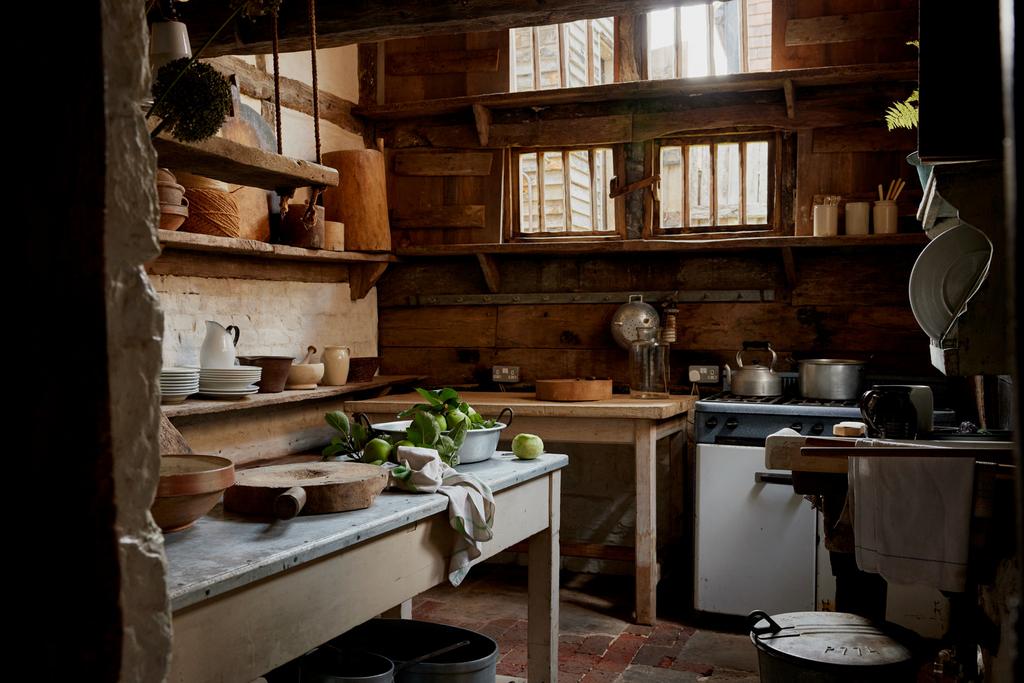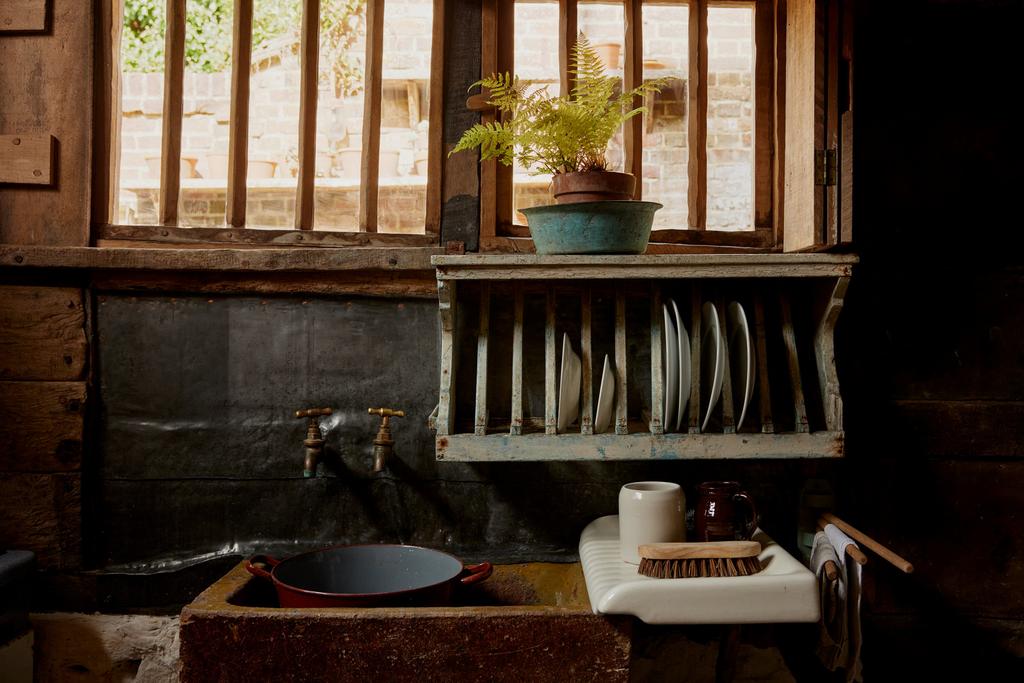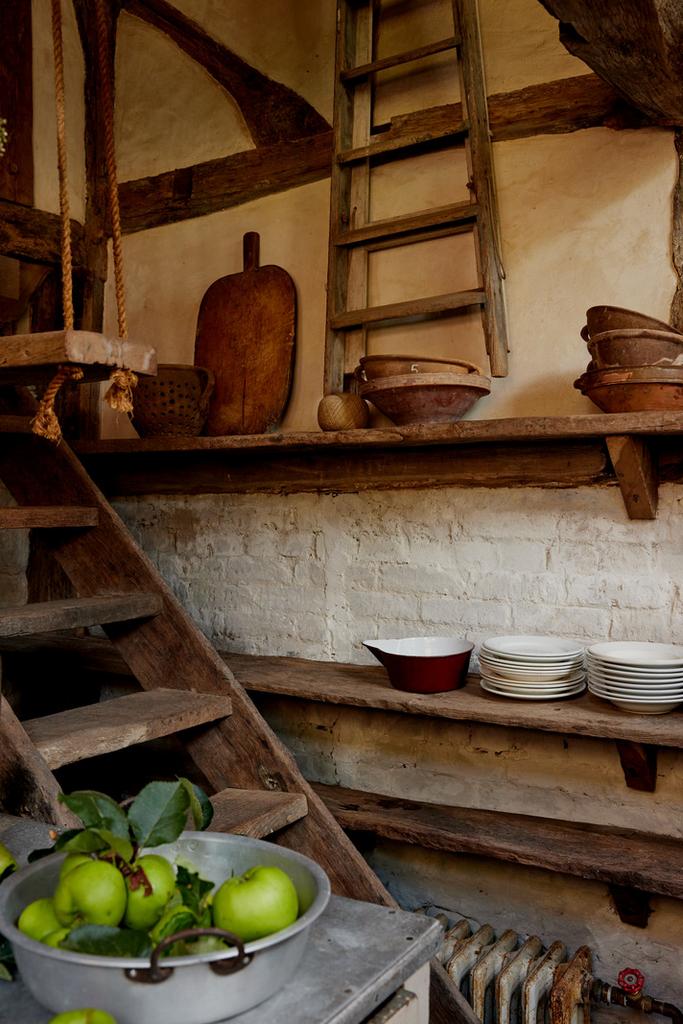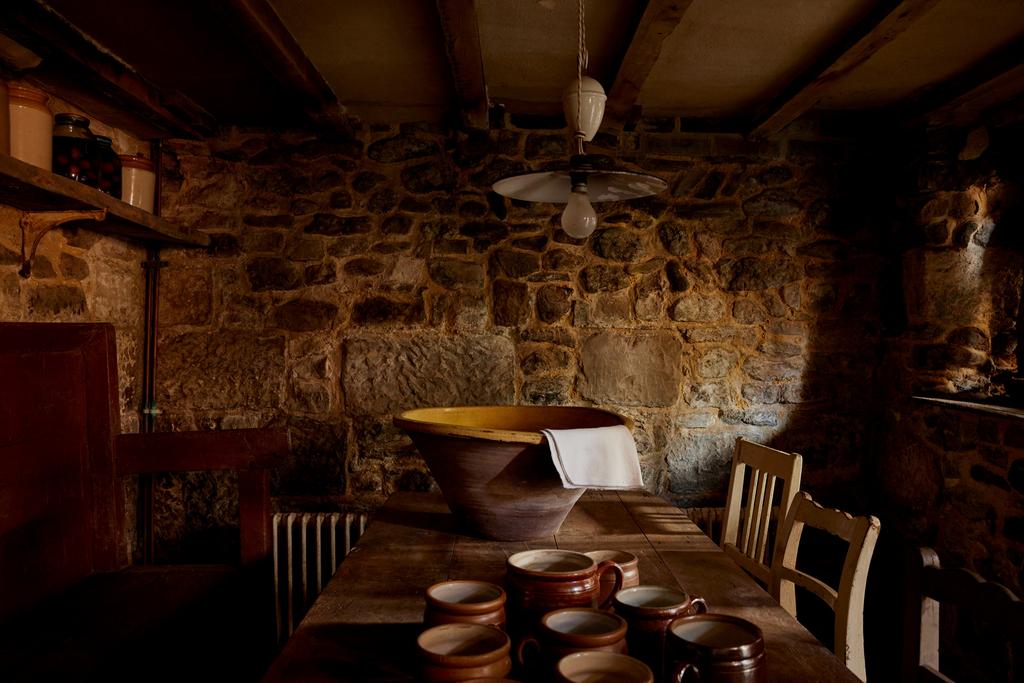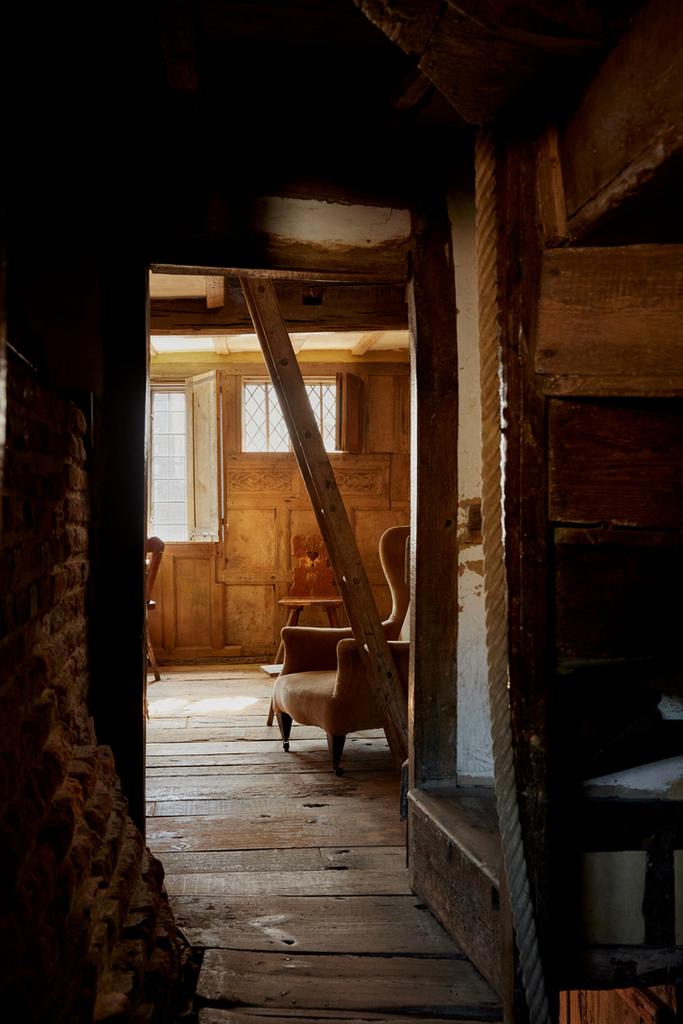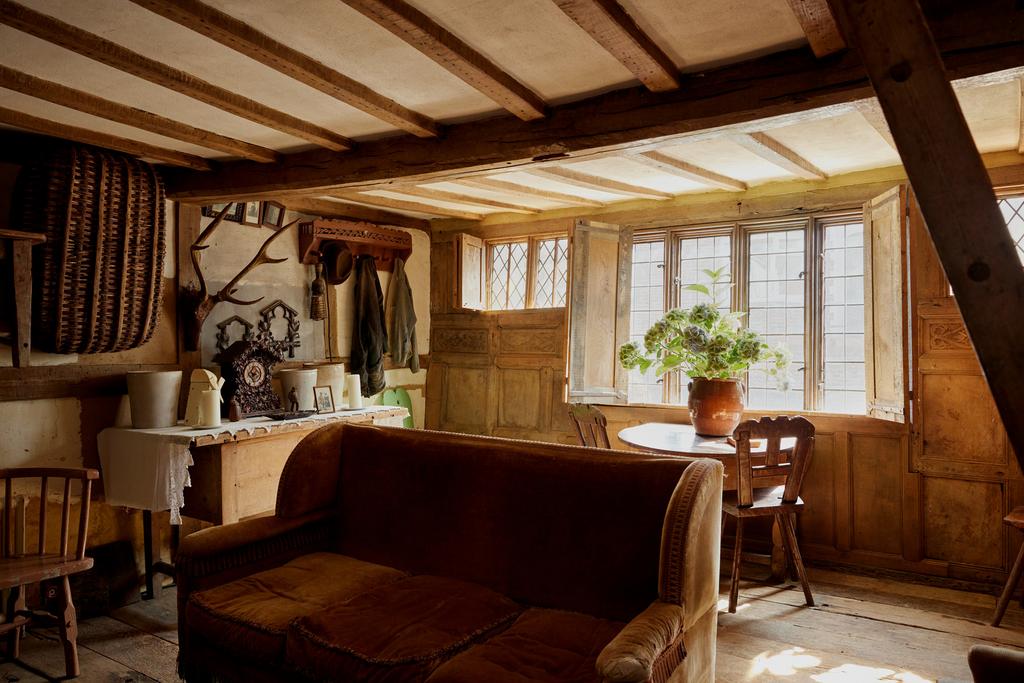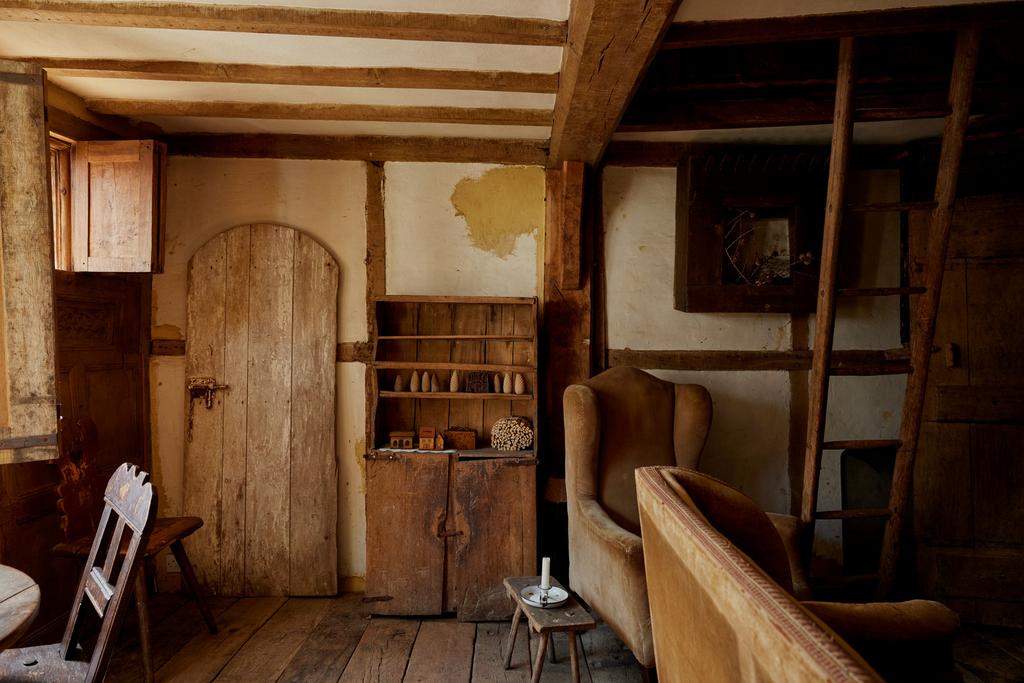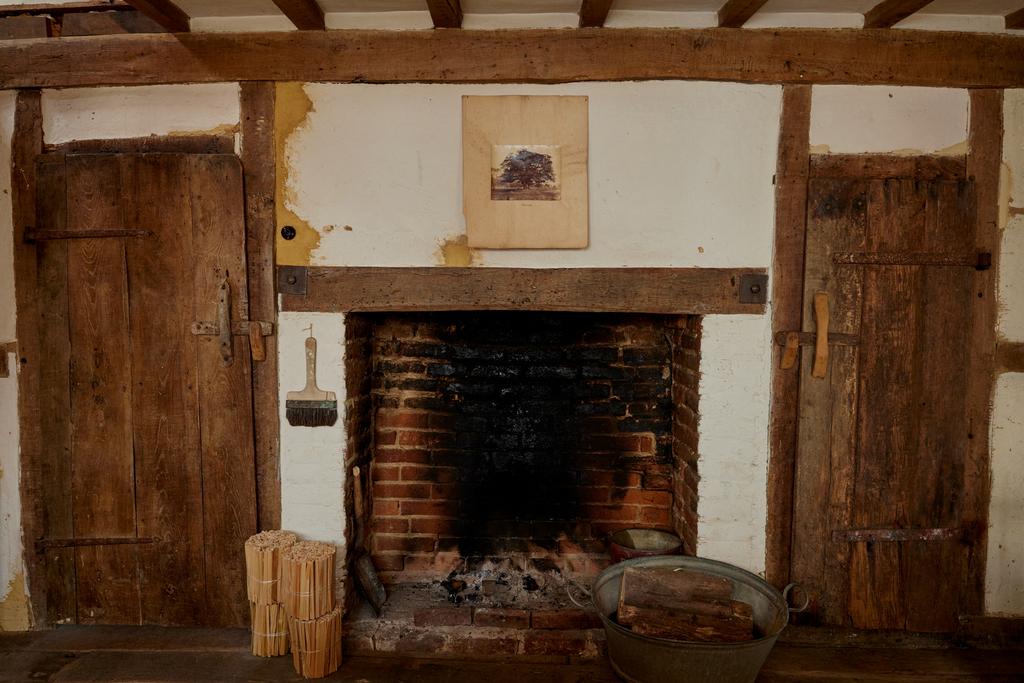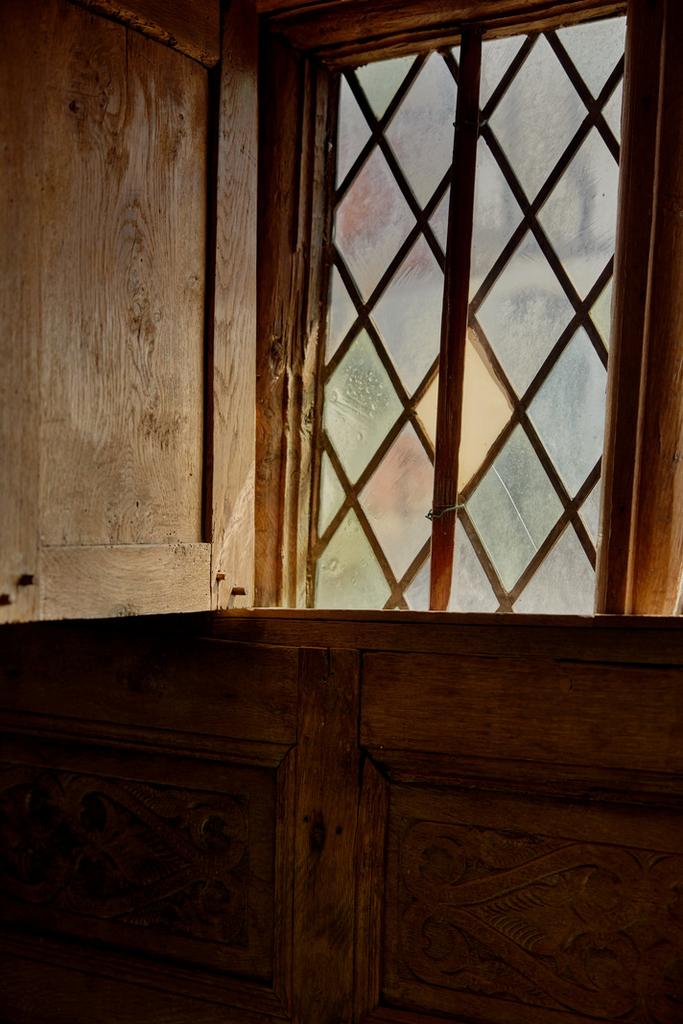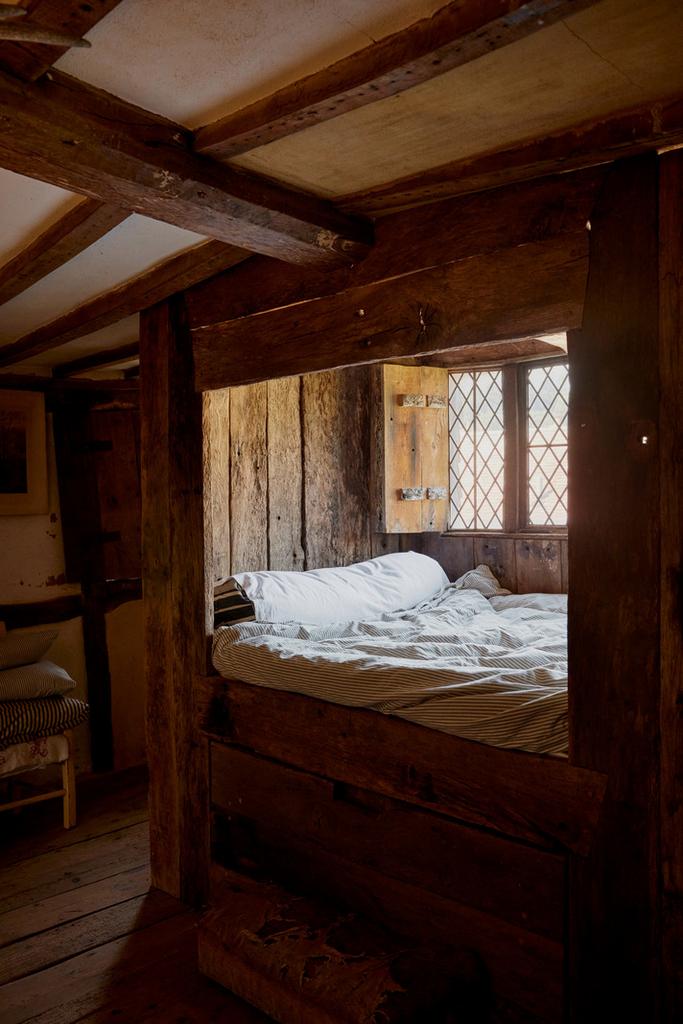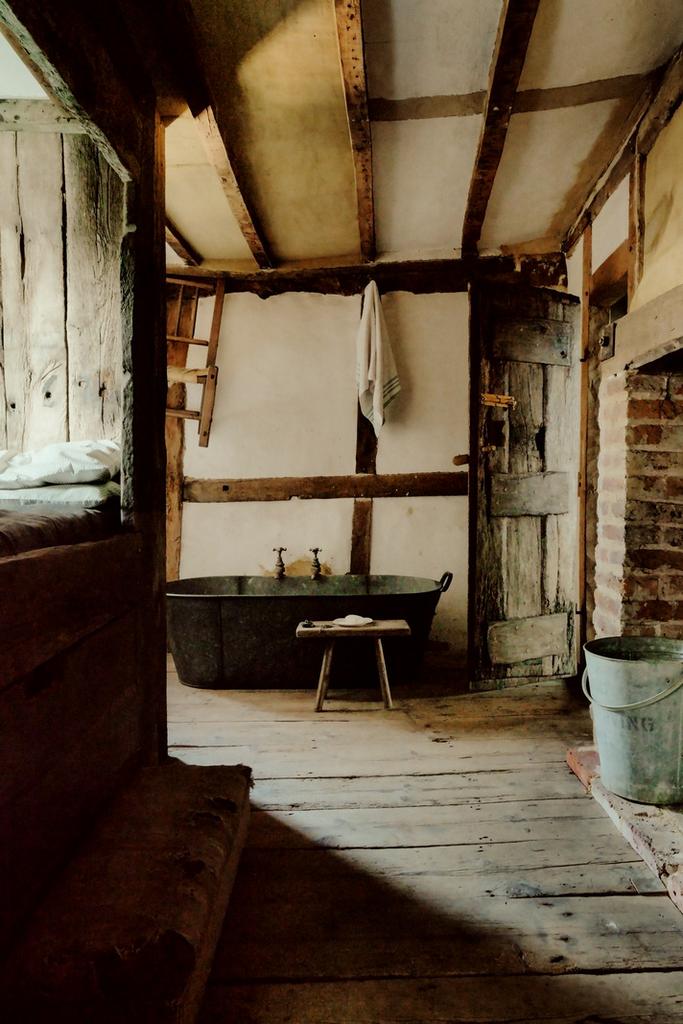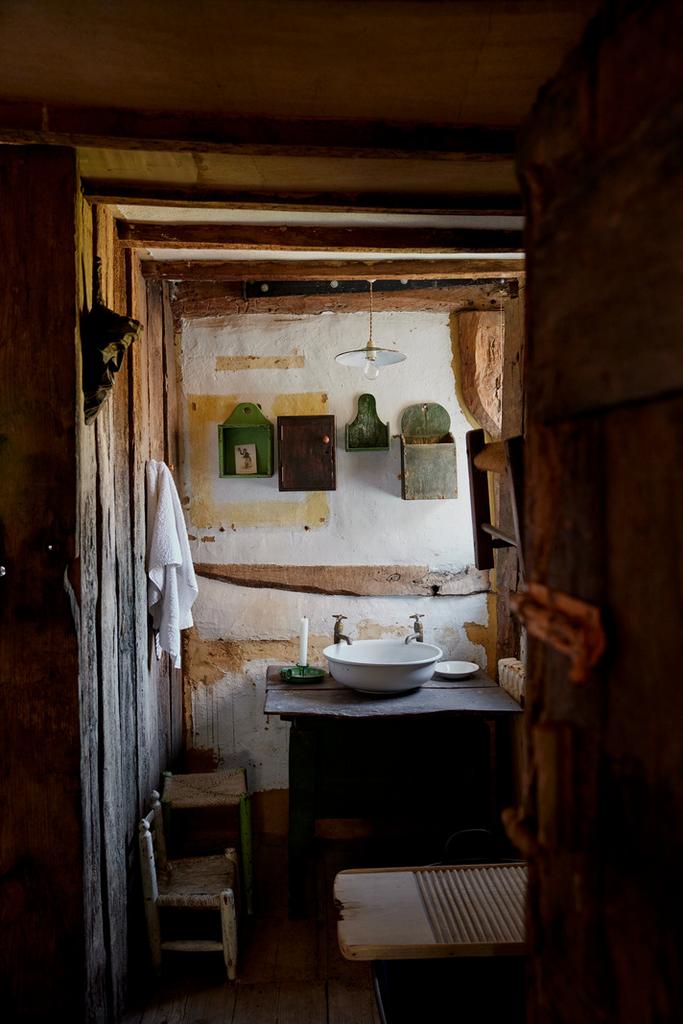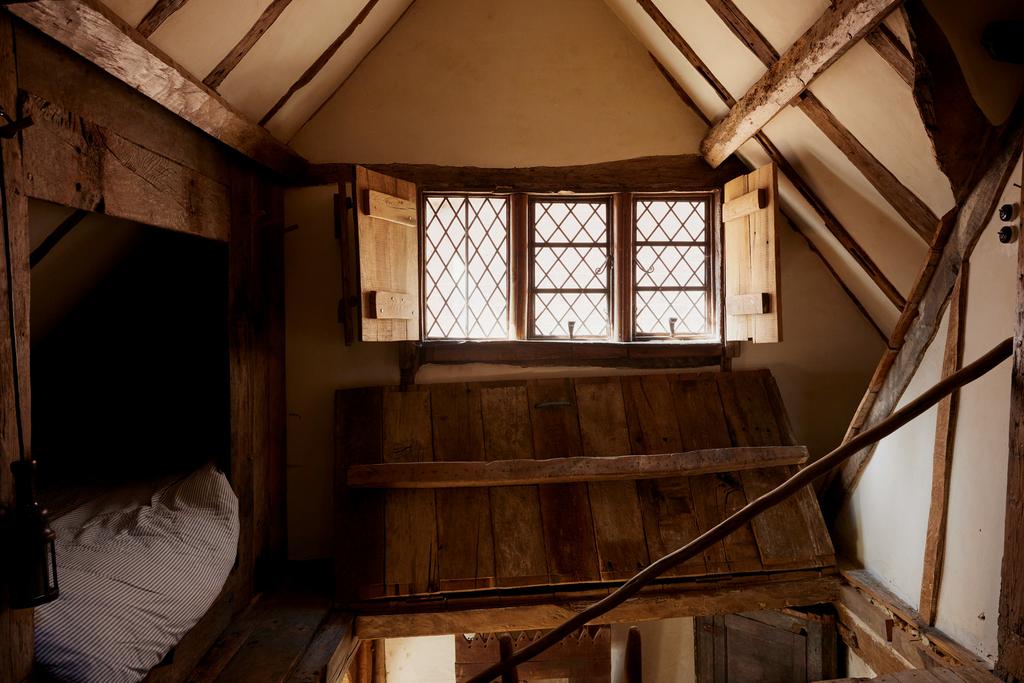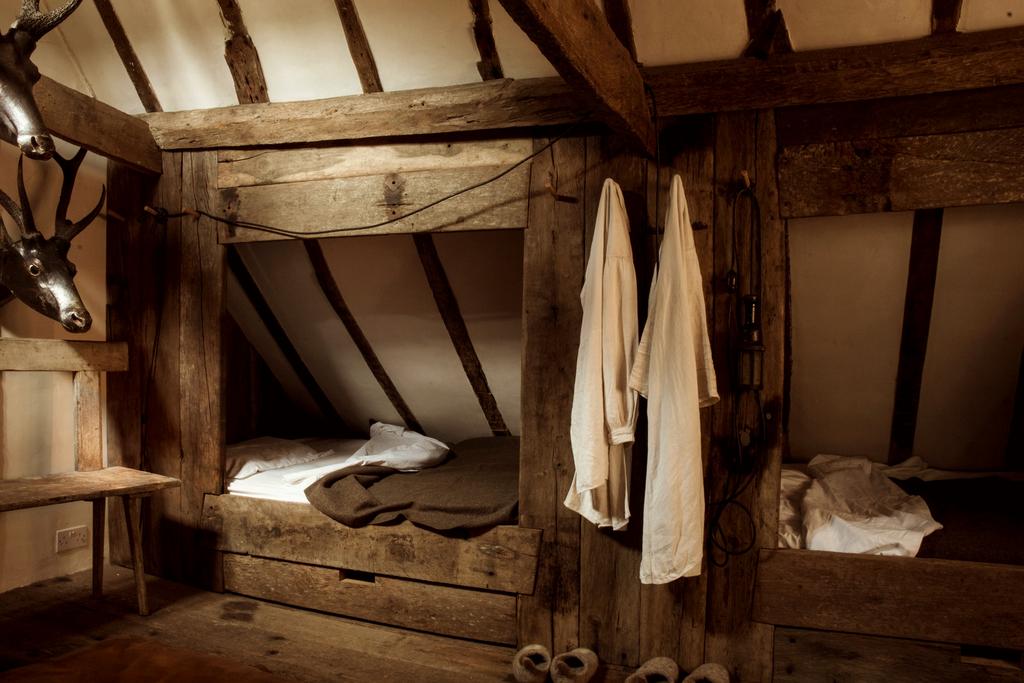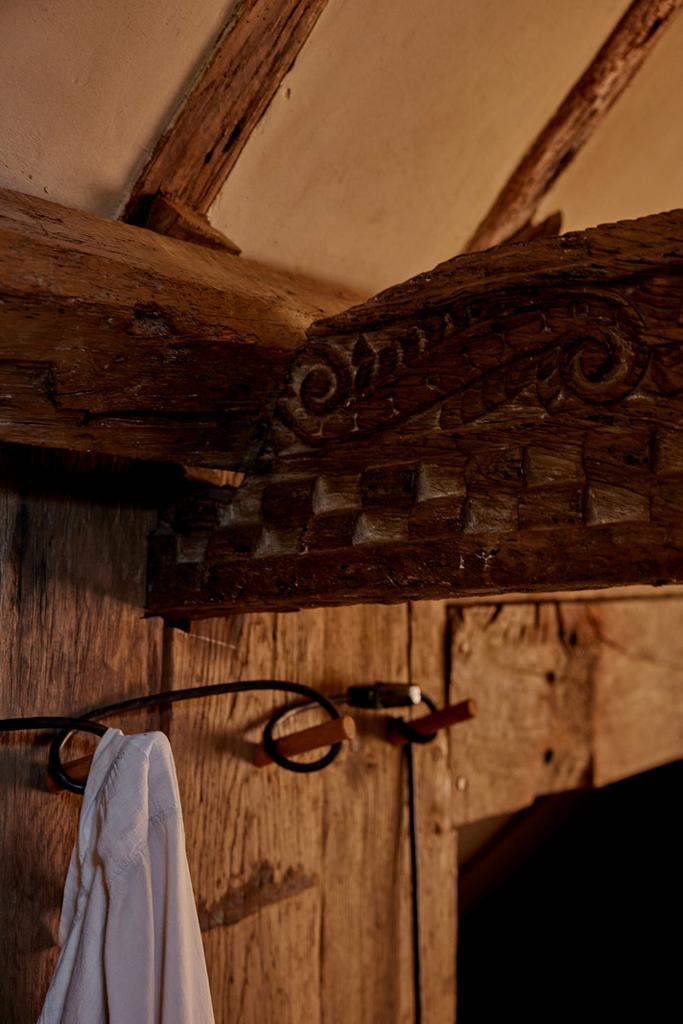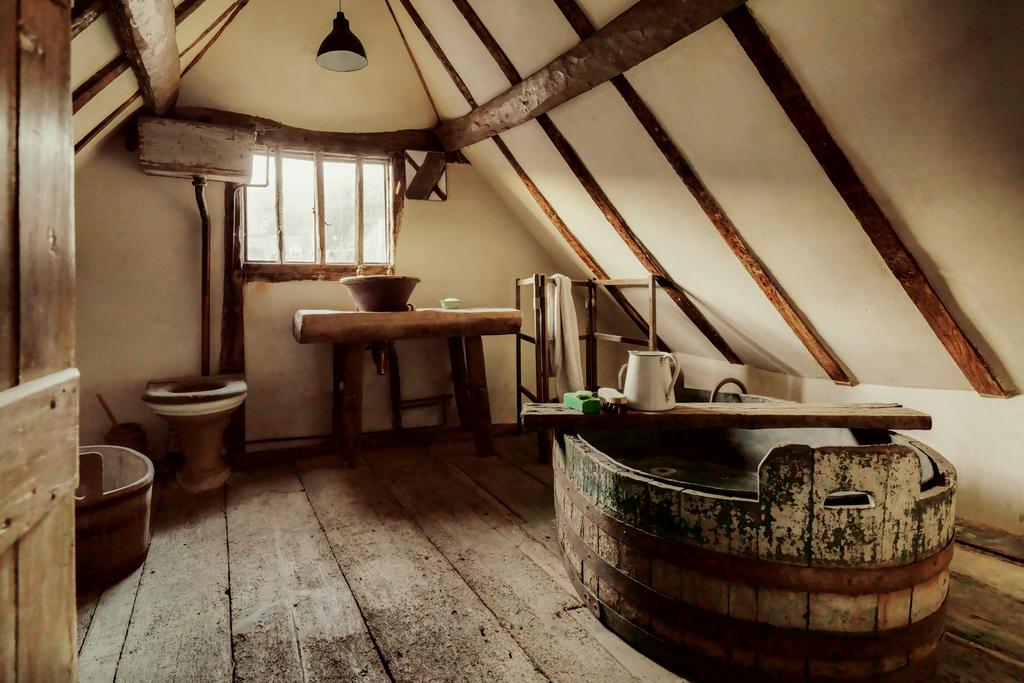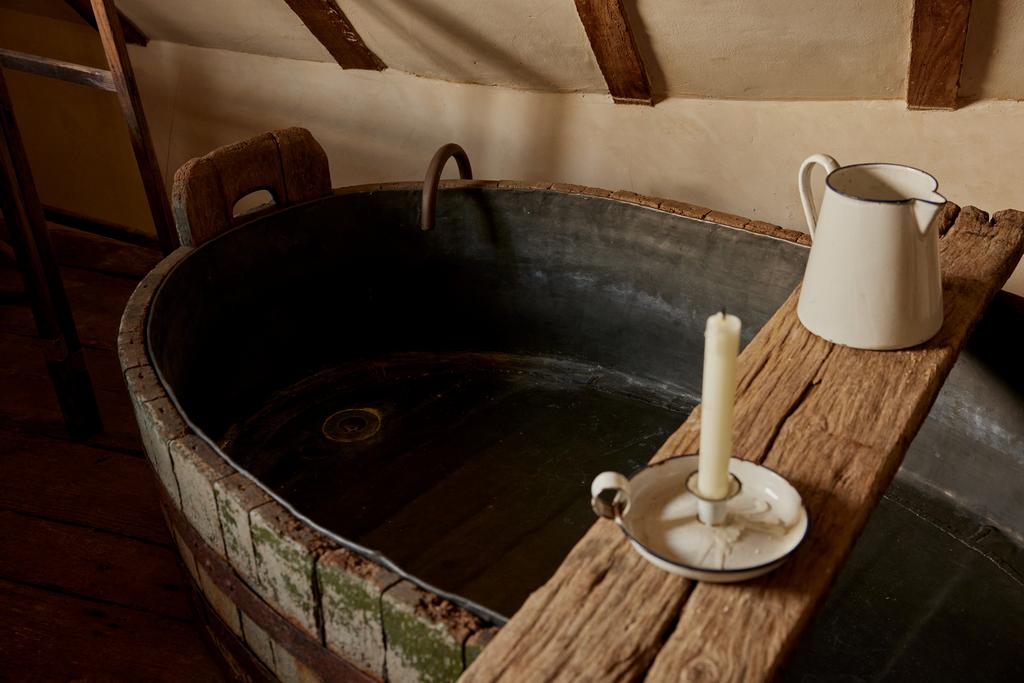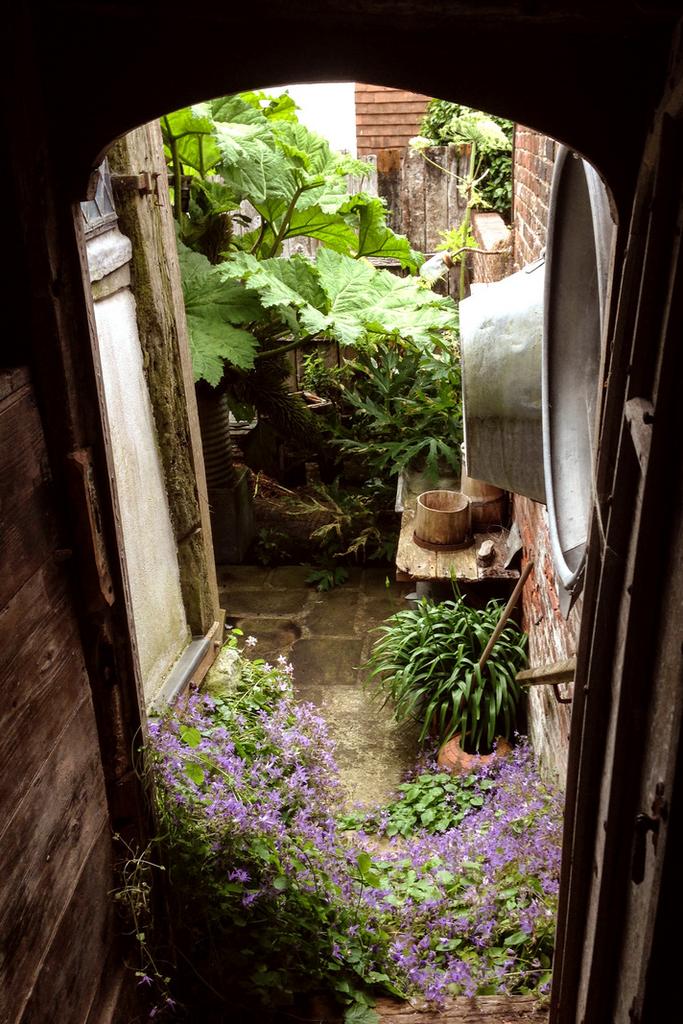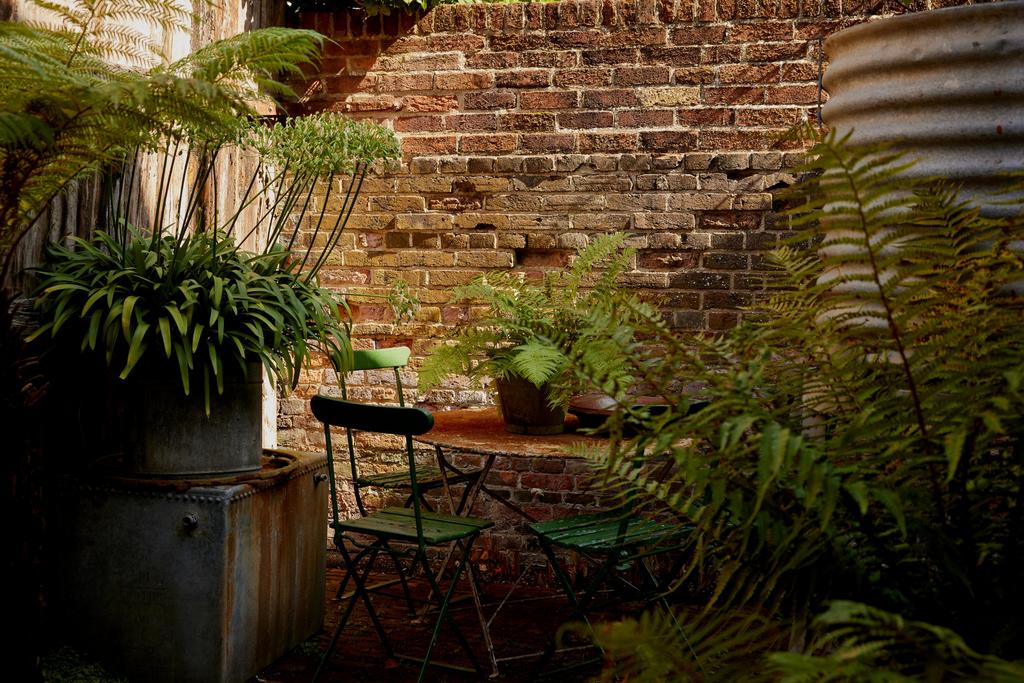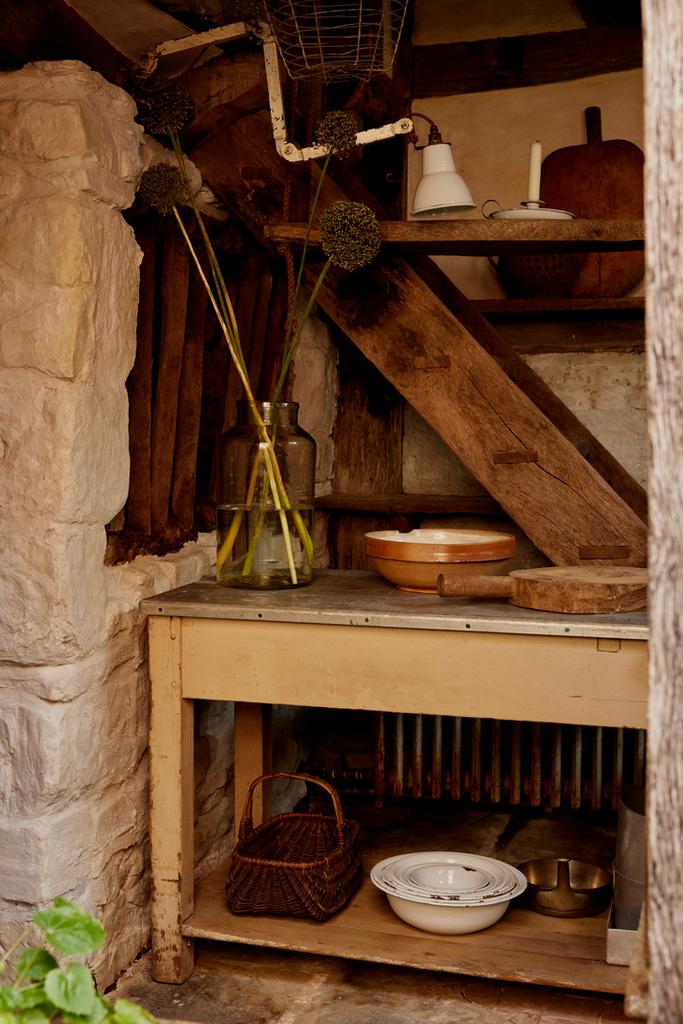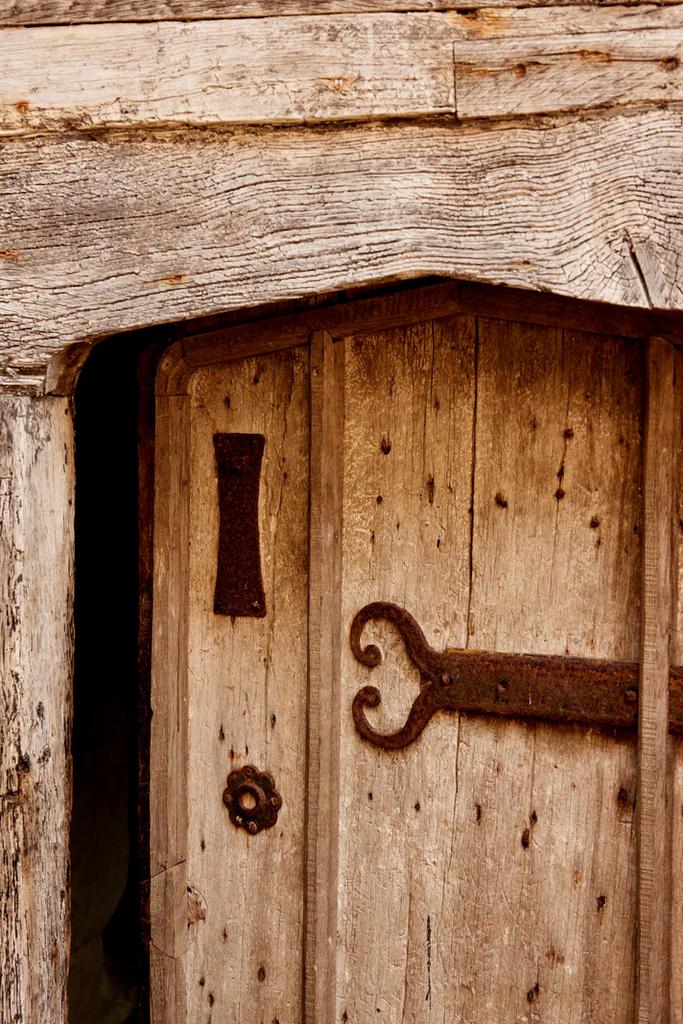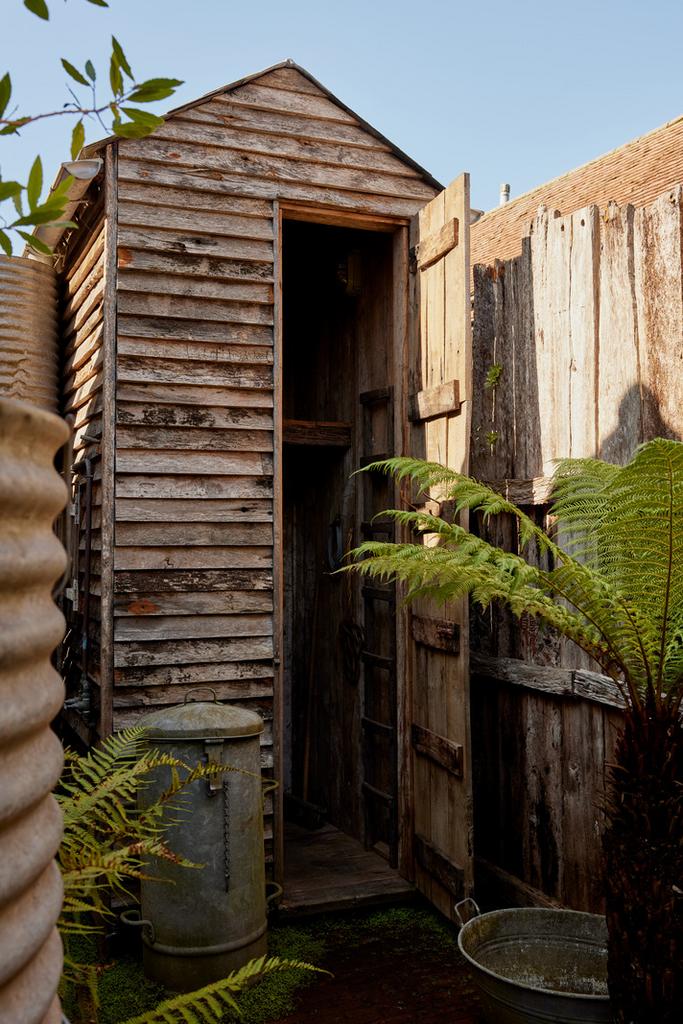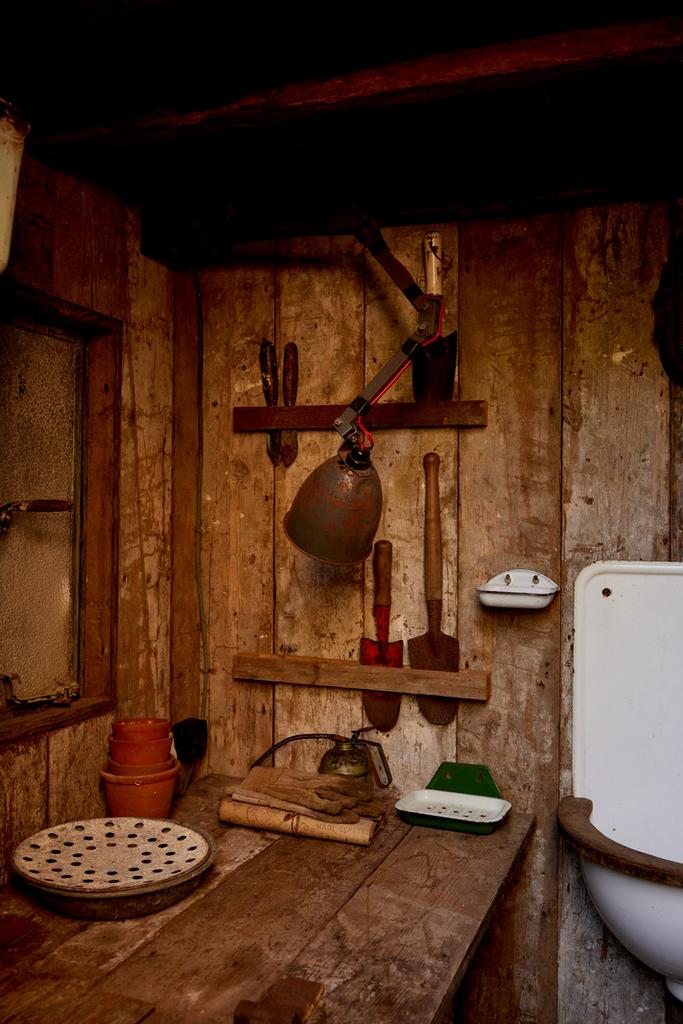3 bedroom semi-detached house for sale
All Saints Street, Hastings, East Sussex
Semi-detached house
3 beds
2 baths
1,559 sq ft / 145 sq m
Key information
Tenure: Freehold
Council tax: Ask agent
Broadband: Super-fast 54Mbps *
Mobile signal:
EEO2ThreeVodafone
Features and description
- Tenure: Freehold
This spectacular Grade II-listed, three-bedroom house dating to the late 16th century lies on the historic All Saints Street in Hastings’ Old Town Conservation Area. The house has undergone a meticulous restoration that gracefully preserves its original Tudor character while embracing the layers of architectural history that have been added since its construction. Patinated oak studs and moulded beams have been gently revealed, while lath and plaster walls, diamond mullioned windows, staircases and a fully functioning chimney stack and fireplaces have been reinstated. The house is part of the brilliant spectrum of period buildings that make up the Old Town and sits a short walk from its many delightful gastro-pubs, independent shops, and the beach.
Setting the Scene
Until the 19th century, Hastings was confined to the Bourne Valley, between the large unspoilt open areas of the East and West Hills. Originally this town - what is now known as the Old Town - had just two main streets, All Saints Street and High Street divided by the Bourne Stream. Today, the Old Town is the historic heart of Hastings, with some of the oldest surviving houses found on All Saints Street.
This house was originally two dwellings; the main part of the building on All Saints Street was built in c. 1580, while a wing at the back is thought to be earlier, its timber frame possibly dating to the 15th century. At the point of construction, the house did not stand at the end of the terrace but was rather flanked on both sides by neighbours built at the same time. When the Tudor house to the south was replaced by the Victorians a ‘twitten’ was left between the neighbouring properties, exposing a small-panelled façade with timbers bearing original carpenters' marks.
The house to the north is still standing, with a gabled roof extending over its jettied first floor, an arrangement that would have originally been mirrored in this house, however its gable end was removed during the Georgian era. The two intricately carved barge boards that formed the gable were repurposed, one as a wall-plate carrying the rafters of the first floor, and the other as an intermediate collar in the roof structure. The rich carvings on both are still visible today despite their unusual relocations.
The Grand Tour
A striking façade of close studwork, lime plaster and leaded windows faces the street, and a plank-panelled front door with hobnail fixings opens to the front parlour. The room is lined with boarded panelling, a finish typical of the Tudor period, and flagstones spread underfoot. At the front of the room is a box bay fitted with timber-mullioned windows and shutters fashioned from reclaimed groyne oak. Opposite, an open inglenook fireplace sits under a heavy lintel, and a seat beside the fire is a cosy spot to relax in the evening.
A passage to the right of the inglenook leads to the middle parlour, which is currently arranged as an informal dining area. The room is characterised by a rich palette of materials; elements of the original timber frame weave around infill walls reinstated with horse-hair, lath and lime plaster, and there is an inglenook fireplace of exposed red brick. From one side, light filters through a row of leaded windows to fall on floorboards cut from reclaimed groyne oak sourced from the dismantled groynes of the local beaches, revealing their weathered surfaces that have been infused with salt. At the other side, a door opens to the rear courtyard garden.
A small staircase descends from the middle parlour to the kitchen. The double-height space is open to the timber roof structure, creating a wonderful sense of volume, and a mixture of flagstones and bricks have been laid underfoot. A reclaimed stone sink fitted with wall-mounted brass taps and lead splashback sits under tall, timber-mullioned windows, and a run of rustic open shelves provide excellent storage for pots, boards and crockery. Opening directly from the kitchen is an atmospheric dining room with thick walls and floor of original Tudor-built stone.
The first floor is accessed via a newel staircase from the front parlour. There are two bedrooms arranged on either side of the central first-floor landing; one has a singularly atmospheric bed built of timber, placed directly beneath period windows with wooden shutters, and a bath. The second room is arranged at the opposite end of the plan and has a broad inglenook fireplace and a trio of windows, two of which hold their original panes of Tudor glass. Though separate, the rooms share a wonderfully rustic Jack-and-Jill WC.
From the landing, the staircase winds to the second floor where the third bedroom and the primary bathroom are situated, embracing the sloping pitch of the roof above. A pair of built-in timber beds here provide a cosy sleeping nook and an original carved barge board is repurposed as a beam. There is plenty of storage in the eaves, accessed via this room. An additional family bathroom lies across the second-floor landing, with a timber-encased bath that makes for exceptionally ambient soaks.
The Great Outdoors
A wonderful addition to the overall experience of the home, the rear garden is a considered space that, come summertime, erupts with ferns, campanula, aliums and arum lillies. Reclaimed flags and brickwork run underfoot, and the space is enclosed by a brick wall and tall groyne oak fences.
There is also a weatherboarded shed here, modelled on the Hastings' lines of fishermen's net huts. The shed's construction utilises a myriad of reclaimed materials from the local area and is fitted with an enamel sink and an upper floor. At the side of the shed, behind a corrugated half-door, there is an outdoor hot shower with a showerhead fashioned from reclaimed copper to make washing off sand post-beach-trip particularly novel. The shed also has a WC, a cast-iron mounted cistern, plumbing for a washing machine and a potting bench.
Out and About
Hastings is a thriving town, perennially popular with creative communities. Such are the idiosyncrasies of the area that, in 1990, the art critic Jonathan Meades suggested the town be renamed ‘Bohemia’.
The old town is home to some legendary antique traders and independent retailers, including AG Hendy and Co, Warp and Weft, Hawk & Dove, Vintage Bird, Robert's Rummage and Hastings Antiques Warehouse. Art galleries are likewise abundant; the most significant is perhaps Hastings Contemporary (formerly the Jerwood Gallery) designed by HAT Projects, though there are many others of note, including The Rebel Gallery, Lucy Bell Fine Art and The Memorial Gallery. All are a short walk from the house.
An ever-growing number of restaurants and eateries locally are boosting Hastings’ gastronomic reputation, including Rock-a-Nore Kitchen, The Crown, The Albion and local stalwart Maggie’s Fish and Chips. On the High Street, Judges Bakery (founded in 1826) and Penbuckles delicatessen are perfect community food shops, while the family-run Rock-a-Nore Fisheries, a short walk away, sells the daily catch from the local boats.
Hastings is known for its live music scene, and Sunday evenings are the best time to catch an act. The Stag on the East Hill holds lively folk nights, or for a more peaceful pint, The Jolly Fisherman has a fine selection of craft beers within its buttercup yellow walls. This is a town rich in culture and traditions live large; the raucously surreal Hastings Jack-in-the-Green celebrations are the largest of their kind in the country, and the town bonfire procession is equally evocative.
Hastings Station, approximately a 20-minute walk from the house, has frequent services to London. Trains reach London Bridge in an hour and 20 minutes and Charing Cross in one hour and a half.
Council Tax Band: D
Setting the Scene
Until the 19th century, Hastings was confined to the Bourne Valley, between the large unspoilt open areas of the East and West Hills. Originally this town - what is now known as the Old Town - had just two main streets, All Saints Street and High Street divided by the Bourne Stream. Today, the Old Town is the historic heart of Hastings, with some of the oldest surviving houses found on All Saints Street.
This house was originally two dwellings; the main part of the building on All Saints Street was built in c. 1580, while a wing at the back is thought to be earlier, its timber frame possibly dating to the 15th century. At the point of construction, the house did not stand at the end of the terrace but was rather flanked on both sides by neighbours built at the same time. When the Tudor house to the south was replaced by the Victorians a ‘twitten’ was left between the neighbouring properties, exposing a small-panelled façade with timbers bearing original carpenters' marks.
The house to the north is still standing, with a gabled roof extending over its jettied first floor, an arrangement that would have originally been mirrored in this house, however its gable end was removed during the Georgian era. The two intricately carved barge boards that formed the gable were repurposed, one as a wall-plate carrying the rafters of the first floor, and the other as an intermediate collar in the roof structure. The rich carvings on both are still visible today despite their unusual relocations.
The Grand Tour
A striking façade of close studwork, lime plaster and leaded windows faces the street, and a plank-panelled front door with hobnail fixings opens to the front parlour. The room is lined with boarded panelling, a finish typical of the Tudor period, and flagstones spread underfoot. At the front of the room is a box bay fitted with timber-mullioned windows and shutters fashioned from reclaimed groyne oak. Opposite, an open inglenook fireplace sits under a heavy lintel, and a seat beside the fire is a cosy spot to relax in the evening.
A passage to the right of the inglenook leads to the middle parlour, which is currently arranged as an informal dining area. The room is characterised by a rich palette of materials; elements of the original timber frame weave around infill walls reinstated with horse-hair, lath and lime plaster, and there is an inglenook fireplace of exposed red brick. From one side, light filters through a row of leaded windows to fall on floorboards cut from reclaimed groyne oak sourced from the dismantled groynes of the local beaches, revealing their weathered surfaces that have been infused with salt. At the other side, a door opens to the rear courtyard garden.
A small staircase descends from the middle parlour to the kitchen. The double-height space is open to the timber roof structure, creating a wonderful sense of volume, and a mixture of flagstones and bricks have been laid underfoot. A reclaimed stone sink fitted with wall-mounted brass taps and lead splashback sits under tall, timber-mullioned windows, and a run of rustic open shelves provide excellent storage for pots, boards and crockery. Opening directly from the kitchen is an atmospheric dining room with thick walls and floor of original Tudor-built stone.
The first floor is accessed via a newel staircase from the front parlour. There are two bedrooms arranged on either side of the central first-floor landing; one has a singularly atmospheric bed built of timber, placed directly beneath period windows with wooden shutters, and a bath. The second room is arranged at the opposite end of the plan and has a broad inglenook fireplace and a trio of windows, two of which hold their original panes of Tudor glass. Though separate, the rooms share a wonderfully rustic Jack-and-Jill WC.
From the landing, the staircase winds to the second floor where the third bedroom and the primary bathroom are situated, embracing the sloping pitch of the roof above. A pair of built-in timber beds here provide a cosy sleeping nook and an original carved barge board is repurposed as a beam. There is plenty of storage in the eaves, accessed via this room. An additional family bathroom lies across the second-floor landing, with a timber-encased bath that makes for exceptionally ambient soaks.
The Great Outdoors
A wonderful addition to the overall experience of the home, the rear garden is a considered space that, come summertime, erupts with ferns, campanula, aliums and arum lillies. Reclaimed flags and brickwork run underfoot, and the space is enclosed by a brick wall and tall groyne oak fences.
There is also a weatherboarded shed here, modelled on the Hastings' lines of fishermen's net huts. The shed's construction utilises a myriad of reclaimed materials from the local area and is fitted with an enamel sink and an upper floor. At the side of the shed, behind a corrugated half-door, there is an outdoor hot shower with a showerhead fashioned from reclaimed copper to make washing off sand post-beach-trip particularly novel. The shed also has a WC, a cast-iron mounted cistern, plumbing for a washing machine and a potting bench.
Out and About
Hastings is a thriving town, perennially popular with creative communities. Such are the idiosyncrasies of the area that, in 1990, the art critic Jonathan Meades suggested the town be renamed ‘Bohemia’.
The old town is home to some legendary antique traders and independent retailers, including AG Hendy and Co, Warp and Weft, Hawk & Dove, Vintage Bird, Robert's Rummage and Hastings Antiques Warehouse. Art galleries are likewise abundant; the most significant is perhaps Hastings Contemporary (formerly the Jerwood Gallery) designed by HAT Projects, though there are many others of note, including The Rebel Gallery, Lucy Bell Fine Art and The Memorial Gallery. All are a short walk from the house.
An ever-growing number of restaurants and eateries locally are boosting Hastings’ gastronomic reputation, including Rock-a-Nore Kitchen, The Crown, The Albion and local stalwart Maggie’s Fish and Chips. On the High Street, Judges Bakery (founded in 1826) and Penbuckles delicatessen are perfect community food shops, while the family-run Rock-a-Nore Fisheries, a short walk away, sells the daily catch from the local boats.
Hastings is known for its live music scene, and Sunday evenings are the best time to catch an act. The Stag on the East Hill holds lively folk nights, or for a more peaceful pint, The Jolly Fisherman has a fine selection of craft beers within its buttercup yellow walls. This is a town rich in culture and traditions live large; the raucously surreal Hastings Jack-in-the-Green celebrations are the largest of their kind in the country, and the town bonfire procession is equally evocative.
Hastings Station, approximately a 20-minute walk from the house, has frequent services to London. Trains reach London Bridge in an hour and 20 minutes and Charing Cross in one hour and a half.
Council Tax Band: D
About this agent

At Inigo, we believe a beautiful home is a pleasure that never ages. We connect discerning individuals with extraordinary spaces, no matter the price or provenance. Covering urban and rural locations across Britain, our team combines proven experience selling distinctive homes with design and architectural expertise. We unlock the true value of every cottage, coach house, and conversion we represent by telling its story with in-depth features and magazine-quality photography. We take our name from Inigo Jones, the self-taught genius who kick-started a golden age of home design.
